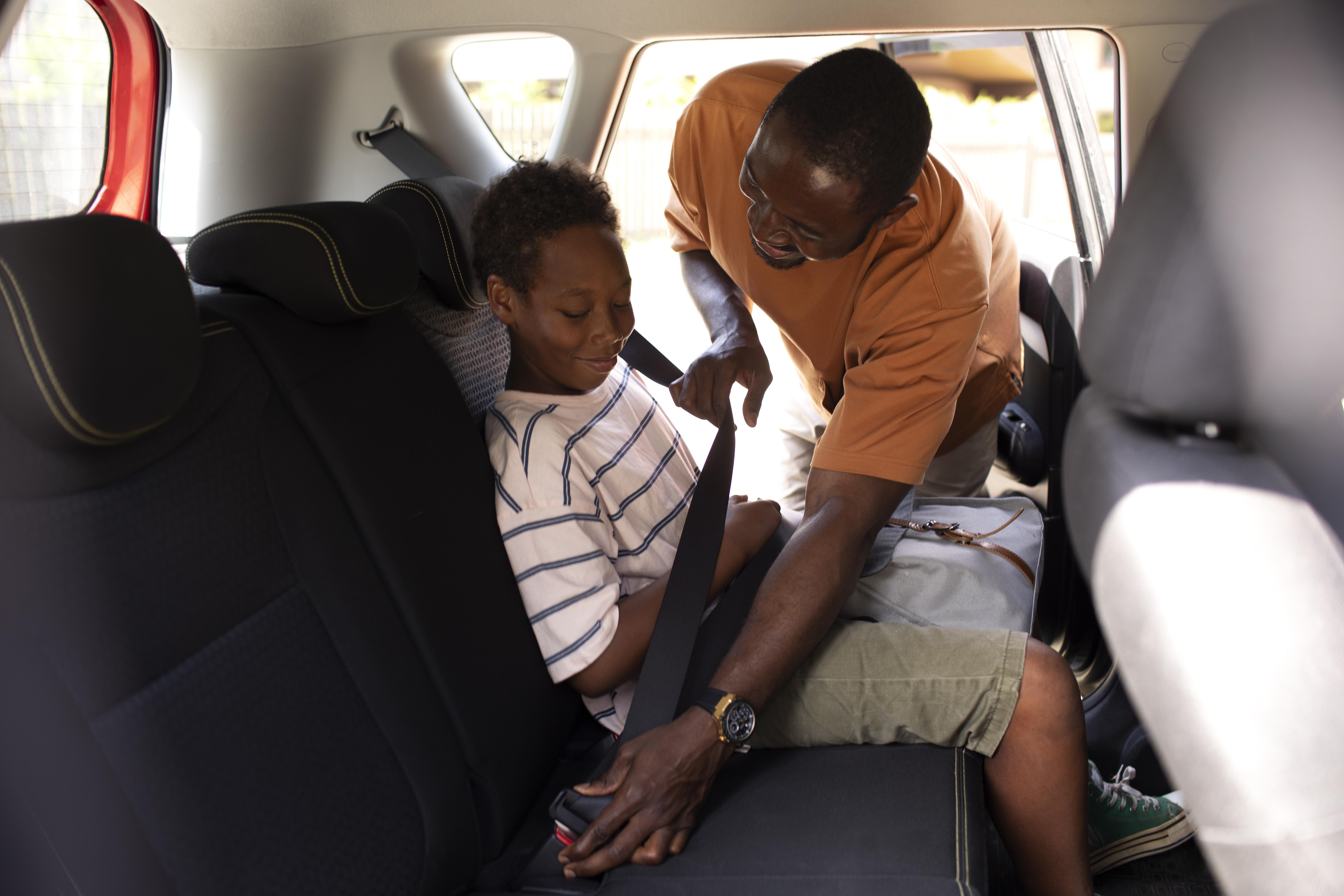Blog
Ensuring proper car seat use is essential to keeping your child safe on the road. Minnesota has specific laws that outline when children should transition between different types of car seats. While these regulations help guide parents, it’s important to resist the temptation to transition too soon. Here’s a complete guide based on Minnesota’s updated child passenger safety laws, effective August 1, 2024.
Rear-Facing Seats: Why It’s Important to Wait
Minnesota law requires children to remain in a rear-facing car seat until at least 2 years old. However, safety experts strongly recommend keeping your child rear-facing as long as possible, even beyond age 2, until they reach the height or weight limit of the car seat.
- Why Rear-Facing is Safer: Rear-facing car seats offer superior protection for a child’s head, neck, and spine in the event of a crash. Young children’s bones and muscles are still developing, making them more vulnerable to severe injury if forward-facing too soon.
- Avoid the Temptation to Switch Too Early: Many parents are eager to turn their child forward-facing for convenience or because they believe their child is too tall or uncomfortable. However, comfort is rarely an issue for toddlers, as they can easily cross or bend their legs in a rear-facing seat without compromising safety.
Tip: Keep your child rear-facing until they meet the maximum height or weight limit specified by the car seat manufacturer, even if they’re over 2 years old.
Forward-Facing Seats: The Next Step
Once your child outgrows the rear-facing seat, they can transition to a forward-facing car seat with a harness.
- Guidelines for Forward-Facing Use:
- Use the forward-facing seat with a five-point harness until your child reaches the maximum weight or height limit specified by the manufacturer.
- Ensure the harness straps are positioned at or above the child’s shoulders and fit snugly.
- Children should remain in a forward-facing seat with a harness for as long as possible before transitioning to a booster seat.
Booster Seats: When to Make the Switch
Children can move to a booster seat when they’ve outgrown the forward-facing car seat. The booster seat helps position the vehicle’s seat belt properly over the child’s chest and lap.
- Minnesota Law: Children should use a booster seat until they are at least 9 years old or can pass the five-step seat belt fit test.
- Before transitioning to using just the seat belt, your child should be able to pass the following test:
- The child’s back should be flat against the vehicle seat.
- Their knees should bend naturally at the edge of the seat.
- The lap belt should lie across the upper thighs, not the stomach.
- The shoulder belt should cross the middle of the chest and shoulder, not the neck.
- The child should be able to sit properly without slouching for the entire trip.
- Before transitioning to using just the seat belt, your child should be able to pass the following test:
- Key Safety Tips:
- Always use both the lap and shoulder belt.
- Ensure the seat belt lies flat across the upper thighs and chest, not the stomach or neck.
- Keep children in the back seat until they are at least 13 years old.
Additional Safety Tips:
- Check Installation: Always follow the car seat manufacturer’s instructions and ensure the seat is properly installed according to your vehicle’s manual.
- Avoid Premature Transitions: Moving to the next stage of car seat too soon reduces protection. Keep your child in each stage until they outgrow the size limits.
- Back Seat Only: Children under 13 should always ride in the back seat to avoid injury from airbags in case of an accident.
Following Minnesota’s child passenger safety laws and resisting the urge to transition too soon can significantly reduce the risk of serious injury in a crash. Always prioritize safety over convenience and consult your car seat manual to ensure proper use.







